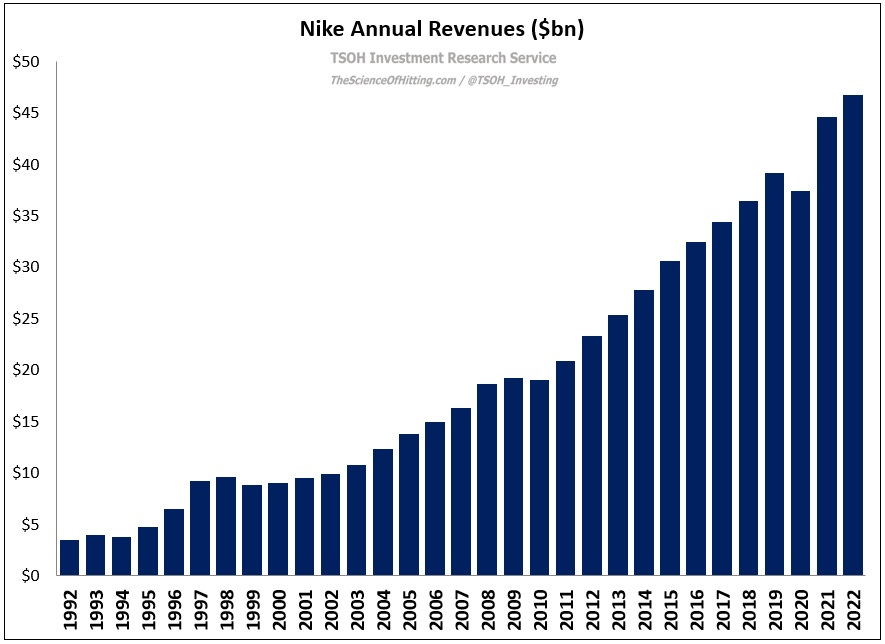"I Hate Advertising"
Nike (NKE) Deep Dive
“Life is growth. You grow or you die.”
In 1971, Phil Knight, the co-founder of Blue Ribbon Sports, faced a critical decision. Onitsuka, the company that had counted on Blue Ribbon over the past eight years for distribution of its running shoes throughout the U.S., had given Knight a choice: he could sell 51% of his company to Onitsuka at book value or they’d find another distributor. Knight concluded that the best path forward was without Onitsuka; with help from a Japanese manufacturer, Blue Ribbon would design and sell its own running shoes. (“If we’re going to succeed, or fail, we should do so on our own terms - with our own ideas, our own brand. Let’s look at this as our liberation. Our Independence Day.”)
In addition to changing its business model, the company would change its name, with inspiration from the Greek goddess of victory: Nike. (“Good brand names are short; they have kind of a hard sound - Coke, Xerox, Kleenex.”)
The company’s first product (invented by Bill Bowerman, the world-renowned University of Oregon track coach and co-founder of Nike) was the Cortez running shoe. The reimagined version of the sneaker featured the Nike Swoosh – a logo that has become a global status symbol for athletes and non-athletes alike over the past 50 years. (The same applies to the company’s slogan, “Just Do It”, which made its debut in a 1988 Nike ad.)
From early on, Knight recognized that the company’s brand image would be greatly improved from clear association with the best athletes in the world: “If we could get some good people to wear it, it would get the attention of consumers… Getting Steve Prefontaine [the 22-year old track and field star] to wear the Swoosh was a big, big help of establishing a brand.”
But signing world class athletes wasn’t enough; after facing some tough times in the early 1980’s, Nike realized it needed to emphasize product design - as opposed to narrowly focusing on performance - in addition to finding unique ways to highlight its athletes / brand. As Knight once told the partners at an ad agency, “I hate advertising” - but what he actually hated was traditional advertising. That perspective informed an approach at Nike that set its marketing and brand image apart from many competitors over the decades (consider the fact that there’s a Nike ad – something people typically try to avoid, not actively seek out - with over 100 million views on YouTube).
These early lessons set the foundation for what Nike is today: a global brand that establishes long-term partnerships with the best teams and athletes in the world, while telling their stories in a unique way that incites an emotional response that few competitors, if any, have truly been able to replicate. (“Knight had boldly proclaimed at a shoe industry conference in Chicago in the mid-1970s that he wasn’t in the shoe business. He was in the entertainment business.”) Nike’s unparalleled roster of athletes – most notably Michael Jordan, with the Jordan Brand putting up $5.1 billion in wholesale equivalent revenues in FY22 - speaks to the benefits of industry leadership and a willingness to consistently spend significant sums: SG&A expense, as a percentage of revenues, increased by ~1,000 basis points over the past three decades; revenues increased ~14x over the same period, from $3.4 billion to $46.7 billion. (FY22 advertising and promotional costs, including endorsement contracts, were $3.9 billion, or ~8% of revenues.)
Direct-to-Consumer (DTC)
A big part of the Nike story over the past decade has been the company’s transition from a wholesale to a direct-to-consumer (DTC) business model.




